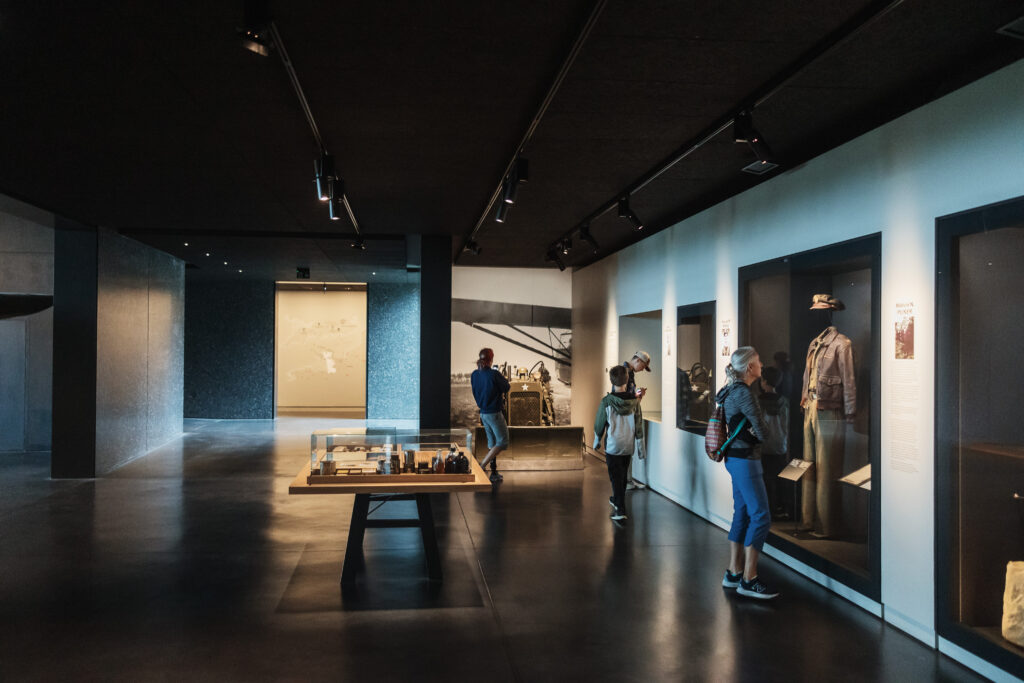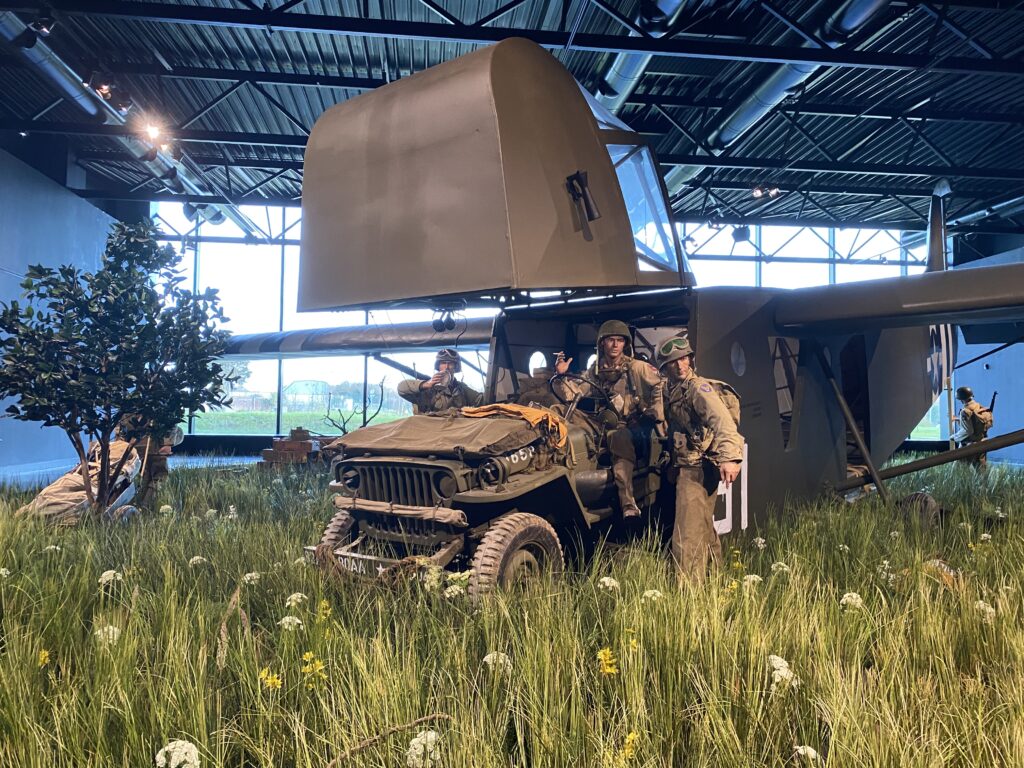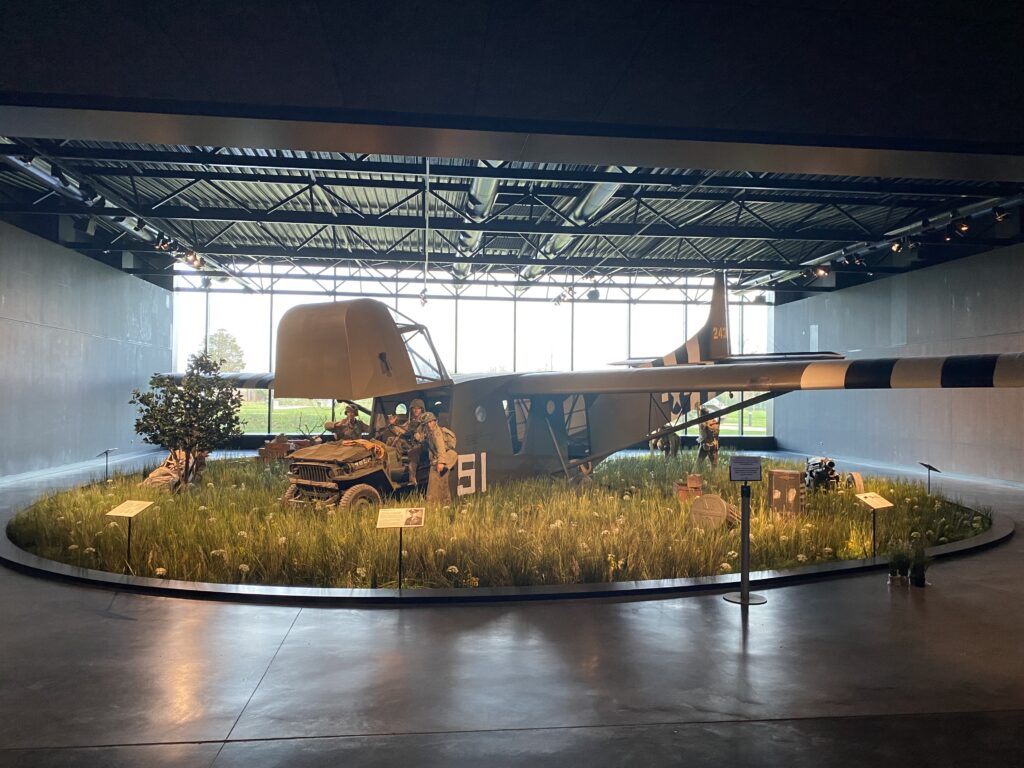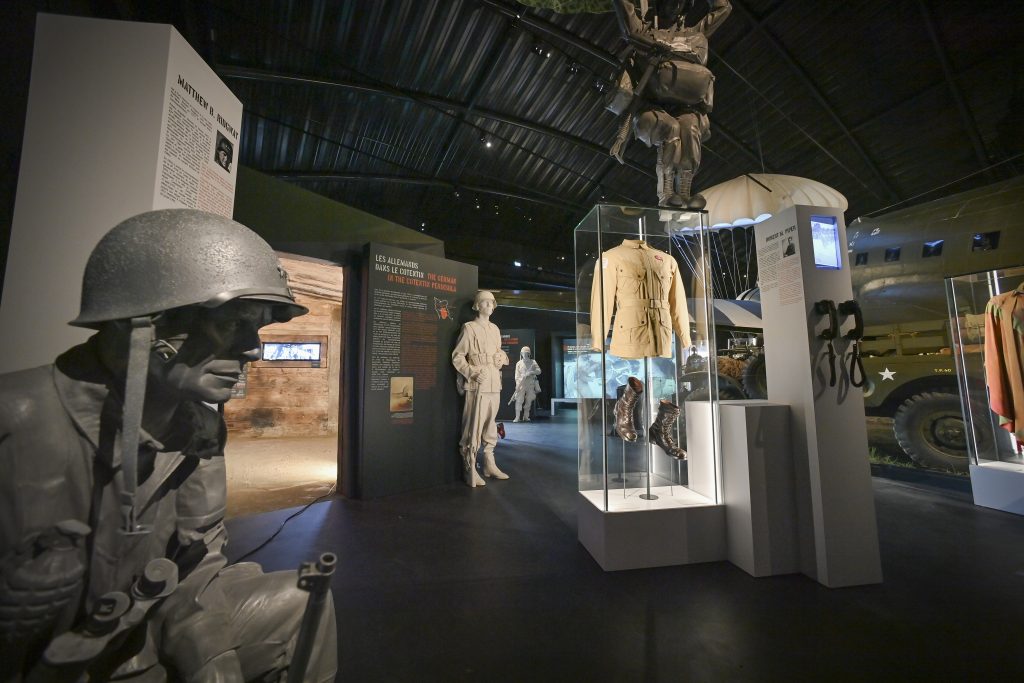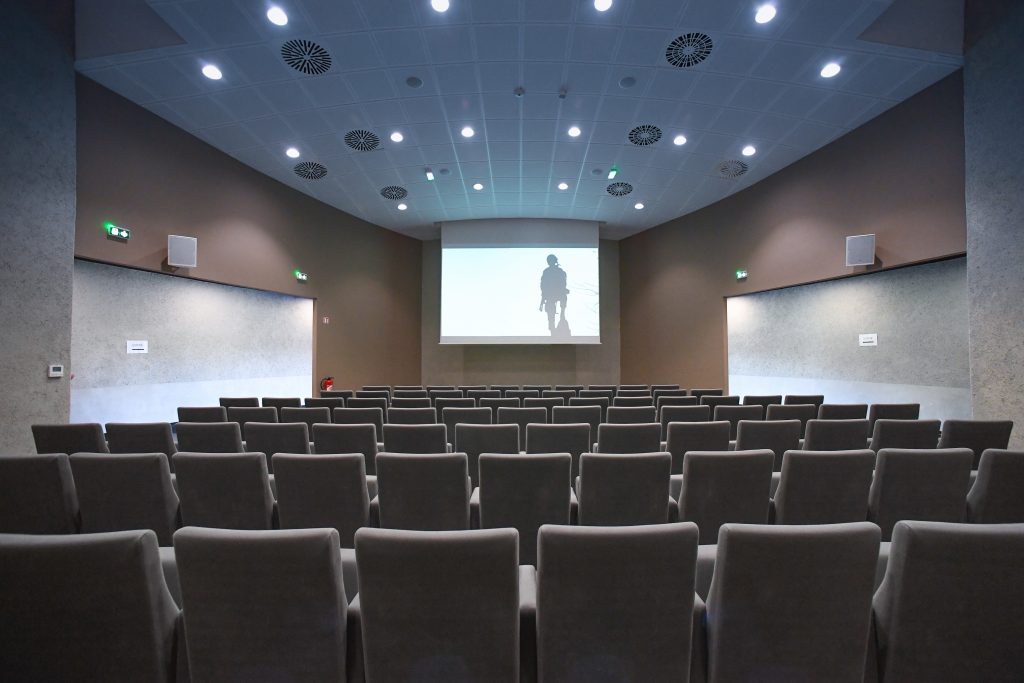The Airborne Museum now numbers 5 buildings, the latest of which was opened in May 2024.
Occupation Pavilion
Until November 2023, the museum’s first area was devoted to gliders and their use during the Normandy Landings. As part of the Airborne 1964-2024 extension-renovation project, this building has been renovated and redesigned to take on a new mission, that of the subjects of the Occupation and the Resistance in the Sainte-Mère-Eglise area.
Until now, this was the missing link in the museum’s history: the background to the arrival of the paratroopers and glider soldiers in Normandy. How did the local people cope with the 4 years of German occupation, with requisitions, rationing, forced labour and curfews? How did daily life reorganise itself during this difficult period, and what behaviours did the inhabitants display? And finally, how did the Normandy Resistance organise itself in the area, and what achievements did it make in facilitating preparations for the D-Day landings?
This pavilion also houses 2 rooms where mediators can welcome groups on guided tours.
This building was constructed in 1964 and was the Airborne Museum for almost 20 years until the second building, the C-47, was built in 1983.
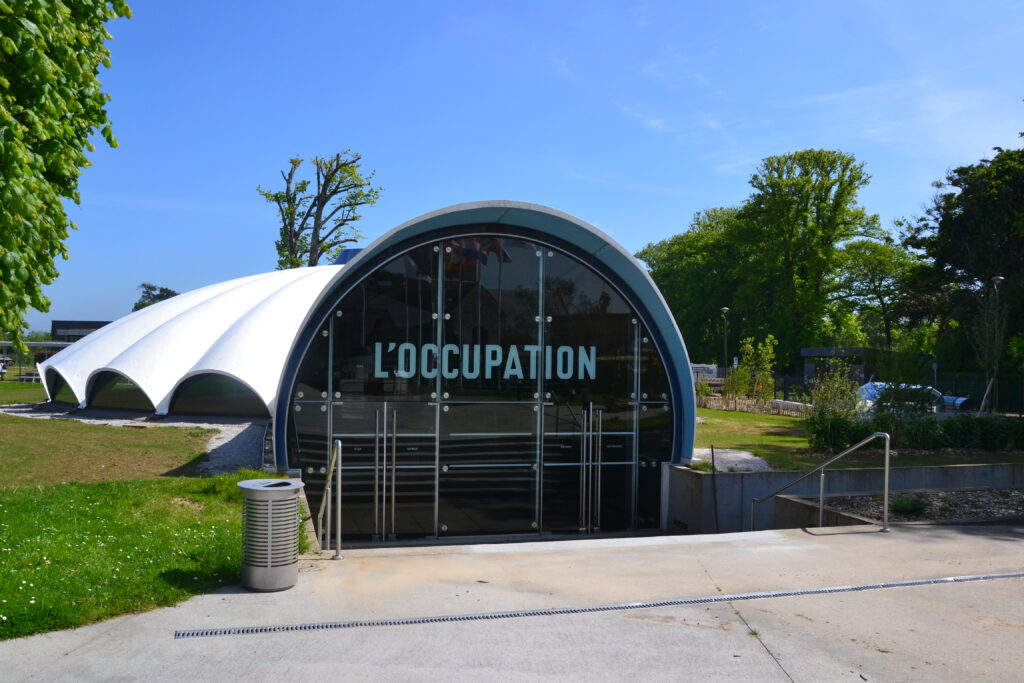
The C-47 building
After a year of work at the Airborne museum of Sainte-Mère-Eglise, the C47 building has finally reopened!
We lifted the veil on a building unrecognizable because almost everything has been redesigned, modernized, except of course our legendary C-47 aircraft. It now sits proudly at the center of a spectacular scenography made of deployed parachutes, suspended mannequins and realistic statues that question the visitor!
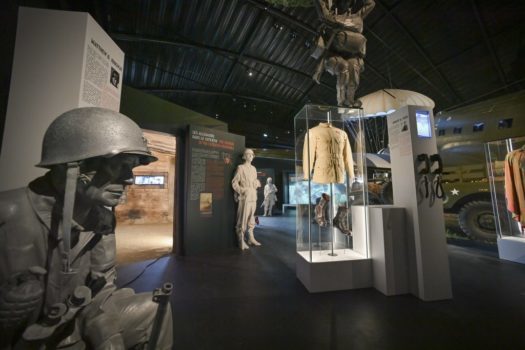
- Dive into the world of American paratroopers from their creation to the boarding for Normandy.
- Discover the pathfinders, those soldiers in charge of marking the drop zones.
- Attend the briefing and equip yourself as a paratrooper before the big jump.
- Understand the Overlord operation thanks to our new film on giant screen.
- Meet the men involved in this extraordinary epic, observe the German reactions to this unprecedented operation.
- See you now at the Airborne Museum, Sainte-Mère-Eglise!
Opération Neptune
Experience D-Day Night Jumps as if you were there !
Sensations et émotions
Through a hyperrealist museography, join the nighttime embarkation of a C-47 aircraft in England, then drop into the square of Sainte-Mère-Eglise in the midst of the fighting and take part in the operations that followed.
Finally you will discover an American reconnaissance plane: a Piper Cub.
Get into the minds of the troopers and feel the intensity of the combat.
What is the Operation Neptune? To learn more, visit this page.
A reception, cocktail or dinner ?
The Airborne Museum hosts you in the building «Operation Neptune» for a nice evening full of character. Combine history and friendliness by organizing your event in the large hall of the building!
Around you, discover the immersive scenes of the Battle of Normandy, the rich collection of the Airborne Museum and above your head a US reconnaissance plane … For sure, your guests will keep an unforgettable memory!
The Ronald Reagan Conference Center
The Ronald Reagan Conference Center is completing the offer of the museum by creating a modular space which be able to accommodate a conference center or a cinema and a temporary exhibition hall. This space has been inaugurated in May 2016.
In its standard configuration, half of the space will be occupied by a temporary exhibition and a cinema will occupy the second part.
Organizing a workshop or hosting a conference ?
The Airborne Museum offers rooms that can accommodate your business meetings or conferences. Surprise your teams by welcoming them into an original place, friendly and full of history.
The 5th building: the new WACO pavilion
As part of its extension and renovation project, the Airborne Museum has built what is now the museum’s 5th building, the new WACO pavilion. The old WACO building was too small to properly showcase the museum’s gliders, or to provide an in-depth look at the history of these very special aircraft. Thanks to the 1200m2 of this new architectural achievement, this is now possible.
In the pavilion’s 5 rooms, visitors can learn more about the origins of gliders and how they were designed, using both virtual and real models. Next, the missions of the D-Day gliders and their logistical requirements will be revealed. But the missions that followed D-Day are also discussed, namely Provence, the Netherlands and Germany. A room dedicated to the history of the museum’s gliders brings the building to a close.


